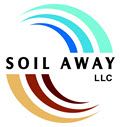
Preparing for a Flood Disaster
Natural disasters can happen at any time, at anyplace and to anyone. Mother Nature does not discriminate. Violent storms; hurricanes, tornadoes, earthquakes, and floods can cause panic and leave you and your family completely devastated. You must prepare yourself. Floods, in particular, are very unpredictable as well as highly destructive. Floods are the most common natural disaster in the United States. They can happen at any time and even in regions that aren’t that used to rain. To survive, you must know the steps in preparing for a flood disaster
Ways flooding can occur
Flooding is an overflowing of water onto land that is usually dry. It can occur in a small amount of water or it can cover a house up to the rooftop. While flooding can happen anywhere, it’s vital to be prepared if you reside in a low-lying region near a body of water including a river, stream, or along the coast as well as downstream from a dam or levee. Flooding can occur in various ways:
- When bodies of water can’t hold back excessive rain or snowmelt
- Excessive moisture or precipitation can’t be fully absorbed into the ground
- Waterways are blocked with debris or ice
- Dams or levees break
Preparing for a flood disaster
There are several ways to prepare for a flood:
- Check with local authorities about local flood plans or reports that specify problem areas
- Ask about relocation routes and centers
- Prepare an emergency kit consisting of
- Non-perishable food
- A gallon of water per person per day
- Battery powered radio and flashlight
- Extra batteries
- First-aid kit
- Basic tools to shut off utilities
- Maps of the local area
- A flood disaster plan
- A list of emergency telephone numbers
- Check your insurance policy to see if you’re covered for flood damage
If you decide to relocate to higher ground make sure you contact the police, your nearest State Emergency Service (SES) unit, or your neighbors with your moving plans. Be sure to:
- Monitor your local radio for warnings and advice
- Pack warm clothing, important medication, valuables and personal documents in waterproof bags along with your emergency kit
- Put sand bags in the toilet bowl and over all laundry and bathroom drains to avoid sewage backflow
- Turn off utilities
- Have a pet plan in place, not all shelters allow pets. Make sure you have a plan on what to do with your pets if you have to evacuate
- Be sure to take your mobile phone with you
- Lock your home
- Don’t drive into water, especially if you don’t know the depth or current of the flow
Recovering from flood damage to your property
After successfully surviving a flood disaster, it is time to salvage your property. Commercial buildings, residential homes and personal property can sustain heavy damages during flooding. While the situation may seem overwhelming, know that there are professionals ready to help you recover from disaster. Call a professional restoration company. Soil-Away Cleaning and Restoration is highly trained for just such emergencies. They can do anything from drying out your home to checking for any structural damage to repairing your home to its original luster. Call them 24/7 at (603) 641-6555 and start recovering from flood damage today!
Written by E. Aceves

